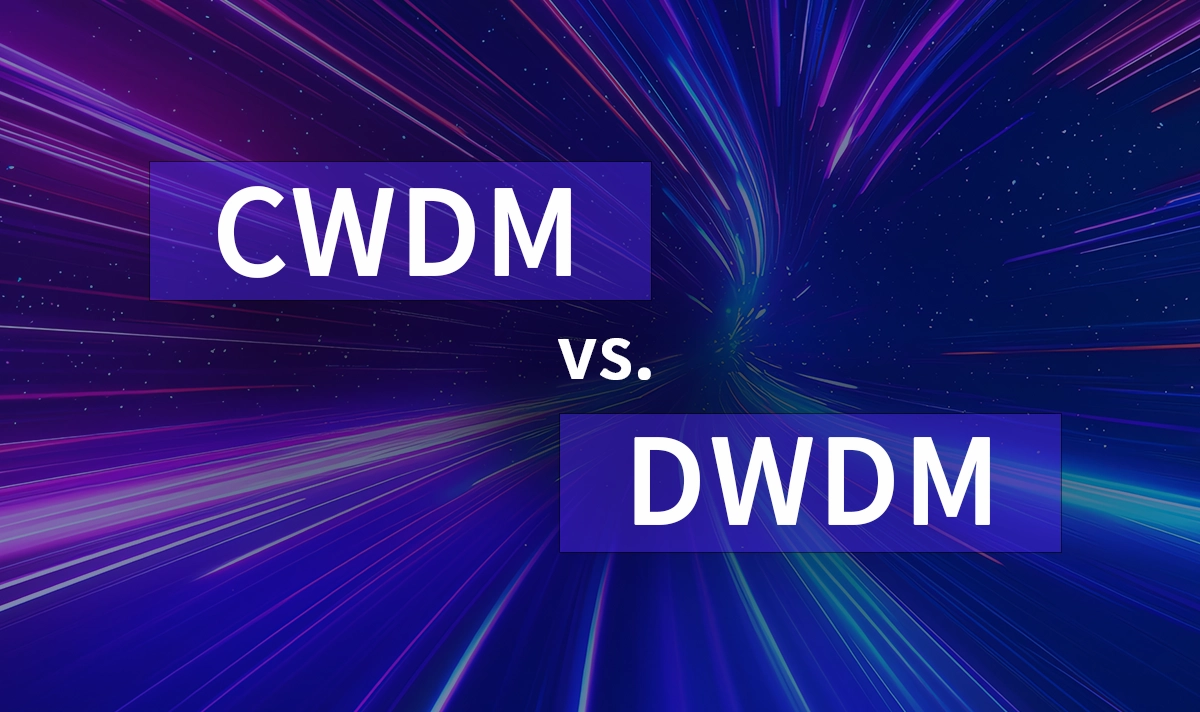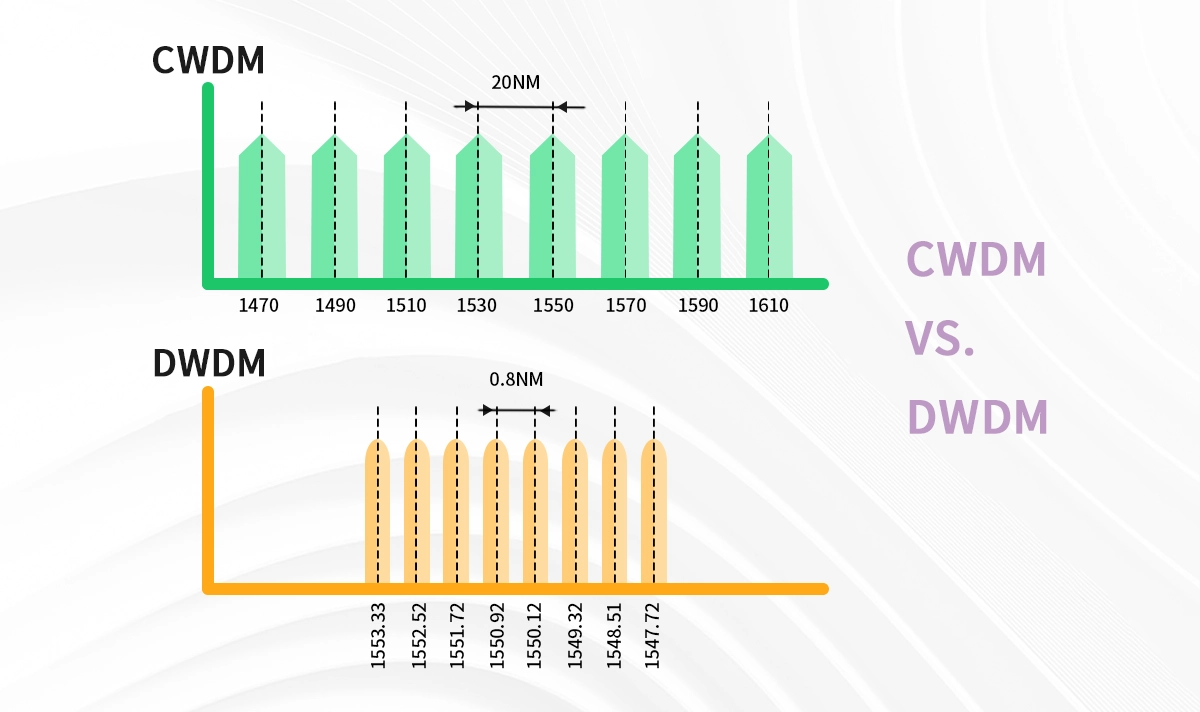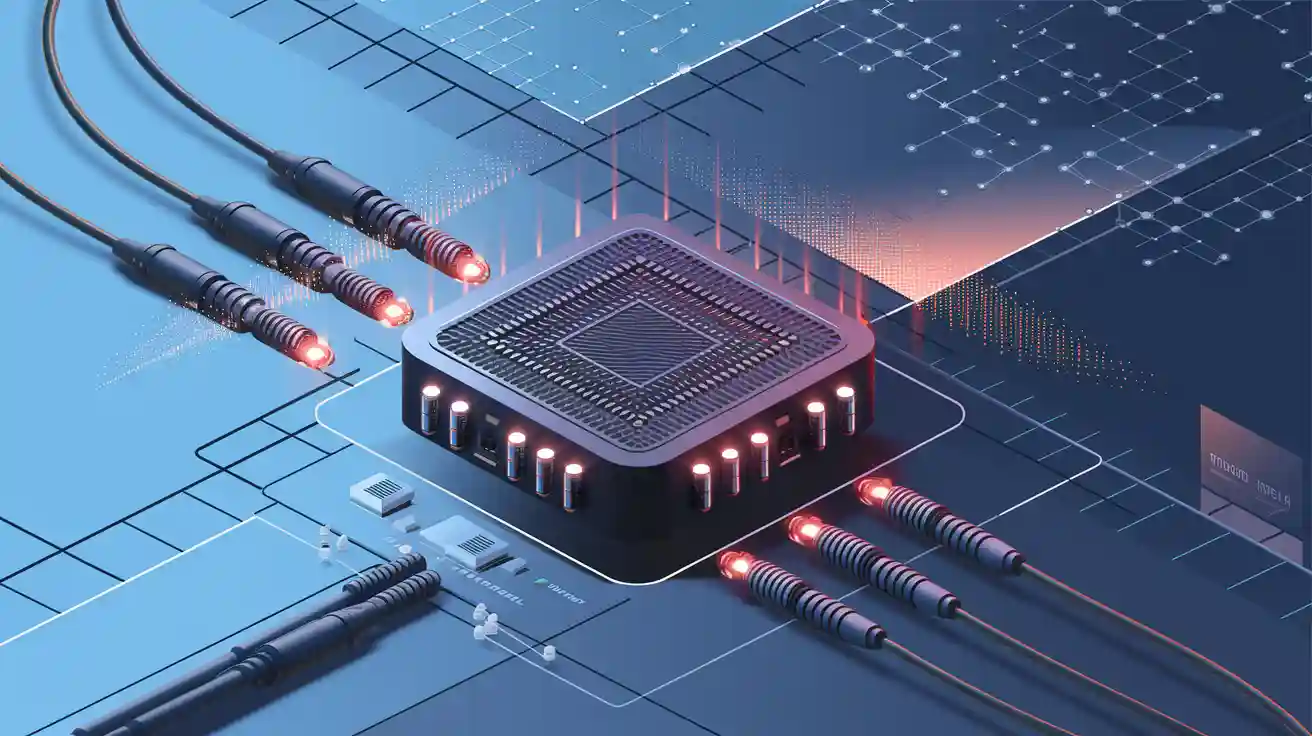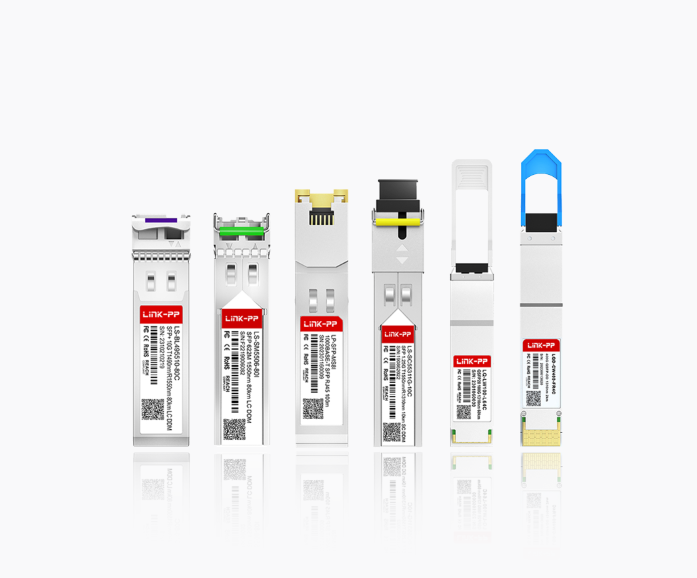
Wave Division Multiplexing (WDM) revolutionized fiber optics by enabling multiple data streams to travel simultaneously over a single fiber. Two dominant variants—CWDM (Coarse Wavelength Division Multiplexing) and DWDM (Dense Wavelength Division Multiplexing)—power modern networks. The main difference in CWDM vs. DWDM lies in channel capacity, data speed, and range. Both use wavelength-division multiplexing, but CWDM vs. DWDM offers distinct features. The table below compares key specifications in wavelength division multiplexing, such as channel spacing and amplification, using products like LINK-PP LS-CW5310-20C and LINK-PP LS-DW3210-40I Optical Modules.
Feature | CWDM | DWDM |
|---|---|---|
Channel Spacing | 20 nm | 0.8 nm (100 GHz), 0.4 nm (50 GHz) |
Number of Channels | Up to 18 | 40–160 |
Transmission Distance | short-to-medium spans | long-haul transmission |
Modulation Laser | Uncooled DFB | Cooled EML/Tunable |
Power Consumption | 0.5W per module | 4W per module |
Amplification Capability | No | Yes |
Key Takeaways
CWDM offers a cost-effective, simple solution for short to medium distances with moderate data needs, making it ideal for metro and enterprise networks.
DWDM supports much higher data capacity and longer distances, using advanced technology suited for backbone and long-haul networks requiring scalability and high performance.
Choosing between CWDM and DWDM depends on your network’s distance, capacity requirements, budget, and future growth plans to ensure the best fit and value.
CWDM vs. DWDM

1. Channel Spacing & Wavelength Capacity
CWDM: Uses 20nm spacing across a broad spectrum (1270–1610nm), supporting up to 18 channels. This relaxed spacing allows uncooled lasers and simpler filters, reducing costs significantly.
DWDM: Employs ultra-tight 0.8/0.4nm (100 GHz/50 GHz grid) in the 1525nm to 1565nm (C band) and 1570nm to 1610nm (L band), packing 40–160+ channels per fiber. Precision-cooled lasers maintain wavelength stability for high-density traffic.
2. Distance & Signal Amplification
CWDM is ideal for short-to-medium spans (up to ~70–80 km), but typically can’t be optically amplified due to wide spacing.
DWDM, however, is engineered for long-haul transmission (hundreds to thousands of kilometers) and supports optical amplification like EDFA within the C‑band.
3. Cost & Power Efficiency
Cost is a major consideration when planning a network. The differences in design and performance between cwdm and dwdm lead to significant variations in both initial and operational expenses.
Aspect | CWDM | DWDM |
|---|---|---|
Initial Investment | Lower; suitable for smaller networks | Higher; suited for large-scale networks |
Operational Costs | Lower; simpler maintenance and power | Higher; complex management and power |
Equipment Complexity | Simple, passive components | Complex, active components |
CWDM offers a cost-effective solution for expanding bandwidth without laying new fiber. Its transceivers and multiplexers are less expensive, and the system consumes less power. DWDM requires a higher initial investment due to specialized equipment and tighter control requirements, but it delivers much greater capacity and scalability.
CWDM systems cost ~50% less than DWDM. Key savings come from:
Non-temperature-controlled lasers (0.5W vs. DWDM’s 4W)
Lower-precision filters and mux/demux units.
DWDM’s premium pricing reflects its complex optics, EDFA amplifiers, and dispersion compensators for ultra-long reach.
4. Complexity
Complexity affects installation, management, and long-term operation. CWDM and DWDM differ greatly in this area.
CWDM uses passive components and uncooled lasers, resulting in lower complexity. Installation and maintenance are straightforward, and the system requires less power and environmental control.
DWDM involves more complex hardware, including cooled lasers and precise temperature management. The dense channel spacing demands careful configuration and ongoing monitoring. DWDM systems also require specialized expertise for setup and troubleshooting.
CWDM’s simplicity makes it attractive for organizations seeking easy deployment and low operational overhead. DWDM’s complexity is justified by its ability to deliver high capacity and support for high-capacity transmissions over long distances.
5. Applications
CWDM Ideal For:
Enterprise/Campus Networks: Connecting buildings ≤40 km apart.
Cost-Driven Upgrades: Adding 4–8 channels without replacing fiber.
Industrial IoT: Rugged, non-temperature-controlled environments (e.g., factory floors).
DWDM Dominates:
Telco Backbone Networks: Long-haul routes between cities.
Hyperscale Data Centers: 400G+ interconnects between campuses.
5G Fronthaul / Backhaul: High-density aggregation for baseband units.
6. Summary
Feature | CWDM | DWDM |
|---|---|---|
Channel Spacing | ~20 nm (coarse) | ~0.8 nm (dense) |
Max Channels | Up to ~18 | 40–96+ |
Distance | Up to ~70–80 km, unamplified | Hundreds to thousands of km with amplification |
Cost & Power | Lower cost, uncooled lasers & filters | Higher cost, requires cooling & amplifiers |
Ideal Use Cases | Metro/access, low-channel needs | Core, backbone, high-speed, long-distance links |
Choosing the Right Solution
Opt for CWDM if you need:
Quick deployment for ≤80 km links.
Budget-friendly scalability (e.g., adding 8 channels incrementally).
Compatibility with existing SFP+ switches.
Choose DWDM for:
Future-proofing beyond 100G.
Maximizing fiber ROI in congested ducts.
Long-haul/ultra-high-capacity demands.
LINK‑PP Optical Transceivers: CWDM & DWDM
LINK‑PP offers high-quality modules tailored to both technologies:
LINK‑PP CWDM Optical Transceivers: Check out the CWDM Transceivers, perfect for metro-access applications that prioritize simplicity and affordability → LINK‑PP CWDM Module.
LINK‑PP DWDM Optical Transceivers: Offering precise wavelength control and temperature stability for backbone and long-haul deployments → LINK‑PP DWDM Module.
Why engineers trust LINK-PP:
✅ Full DOM diagnostics for real-time health monitoring.
✅ 3-year warranty & multi-vendor interoperability (Cisco/Juniper/Arista).
✅ Low-latency designs for financial/AI clusters.
See Also
Exploring WDM Technology And Its Uses In Optical Networks
The Importance Of Digital Monitoring In Optical Transceiver Devices




